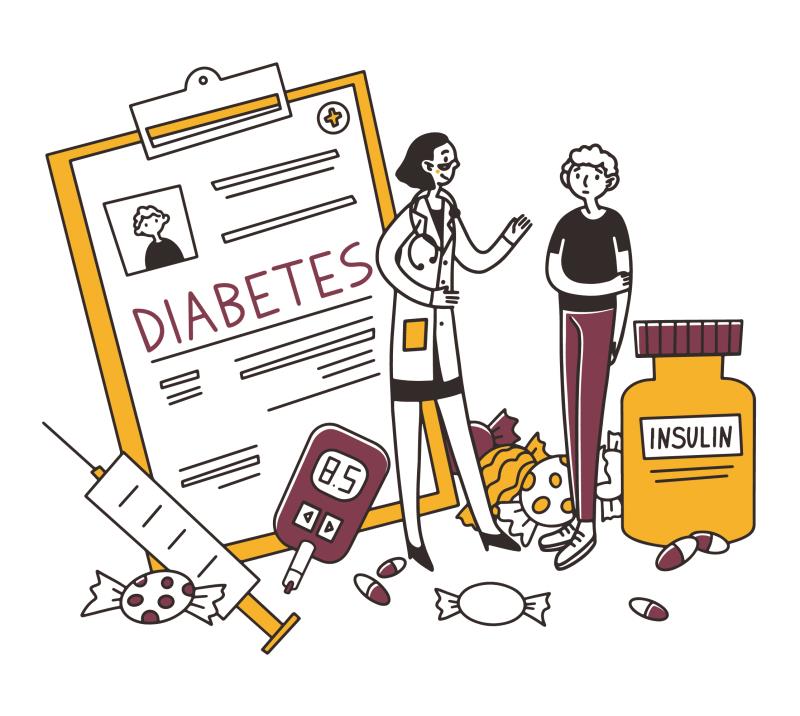Young-onset diabetes: Novel insights on management





At EmW 2025, Professor Andrea Luk from the Department of Medicine & Therapeutics, the Chinese University of Hong Kong, shared insights and recommendations on management of young-onset diabetes (YoD).
Investigation of YoD subtypes
Establishing a correct diagnosis in young people is a major challenge because they are likely to have forms of diabetes other than type 2 diabetes (T2D). [Clin Diabetes Endocrinol 2016;2:18]
“Approximately 25–50 percent of young patients have type 1, hybrid, and other specific forms of diabetes, such as monogenic diabetes [eg, maturity-onset diabetes of the young (MODY)],” said Luk. “This highlights the need for thorough consideration and investigation of alternative diagnoses in young patients with diabetes.”
Since genetic testing is costly, a Chinese-specific clinical model has recently been developed to predict MODY. This model includes inputs such as current age, age at diagnosis, gender, body mass index, systolic blood pressure (BP), HDL-cholesterol (HDL-C), LDL-C, triglyceride, and fasting C-peptide. The model demonstrated a sensitivity of 72.7 percent and a specificity of 92.4 percent in predicting MODY among Chinese individuals with young-onset non–type 1 diabetes. [Diabetes Metab Res Rev 2024;41:e70087]
Proactive screening, aggressive treatment
YoD is associated with higher lifetime glycaemic exposure, accelerated loss of beta-cell function, higher prevalence of cardiometabolic risk factors, and diminished glycaemic response to most glucose-lowering drug classes vs late-onset diabetes. [PLoS Med 2020;17:e1003316; Diabetes Res Clin Pract 2023:205:110954; Diabetes Metab Res Rev 2023;39:e3615]
Importantly, every decade of earlier diagnosis of diabetes is associated with a reduction of 3–4 years in life expectancy. [Lancet Diabetes Endocrinol 2023;11:731-742]
However, younger adults are less likely to be screened for diabetes, resulting in higher HbA1c at diagnosis. [www.chp.gov.hk/files/pdf/dh_phs_2020-22_part_2_report_eng.pdf]
“Proactive diabetes screening starting at an earlier age — particularly targeting those with high genetic risks or obesity — could be beneficial,” recommended Luk. “Young patients may benefit from earlier initiation of a combination of insulin and other pharmacotherapy to achieve glycaemic target promptly.”
Management of risk factors
In the JADE (Joint Asia Diabetes Evaluation) study, which enrolled 41,029 patients with T2D from nine Asian countries/regions, patients with YoD had a high prevalence of cardiometabolic risk factors, including hypertension (78.1 percent), dyslipidaemia (88.4 percent), central obesity (61 percent), and albuminuria (13.6 percent). [Lancet Diabetes Endocrinol 2014;2:935-943]
Of note, suboptimal BP is the leading risk factor for mortality in YoD in Hong Kong. [PLoS Med 2023;20:e1004173] According to a study using data from 147,017 patients with T2D managed in Hong Kong’s public hospitals, young-onset hypertension is linked to higher risks of cardiovascular disease, stroke, and death (pinteraction<0.001 for all) vs late-onset hypertension. [Edith C, AASD 2025]
“Frequent clustering of multiple cardiometabolic risk factors and exposure from an earlier age prompt the need for further research to understand impact on health outcomes, assess the efficacy of early pharmacological intervention, and determine the optimal therapeutic targets for these risk factors,” shared Luk.
Screening of mental health issues
Among Chinese patients with YoD in the PRISM-RCT trial, 10.3 percent had mental illness, and 3.6 percent had a history of previous suicide attempts. [BMJ Open Diabetes Res Care 2024;12:e004120] “Routine screening of depression, anxiety, and stress will ensure timely referral and appropriate care [in YoD],” suggested Luk.